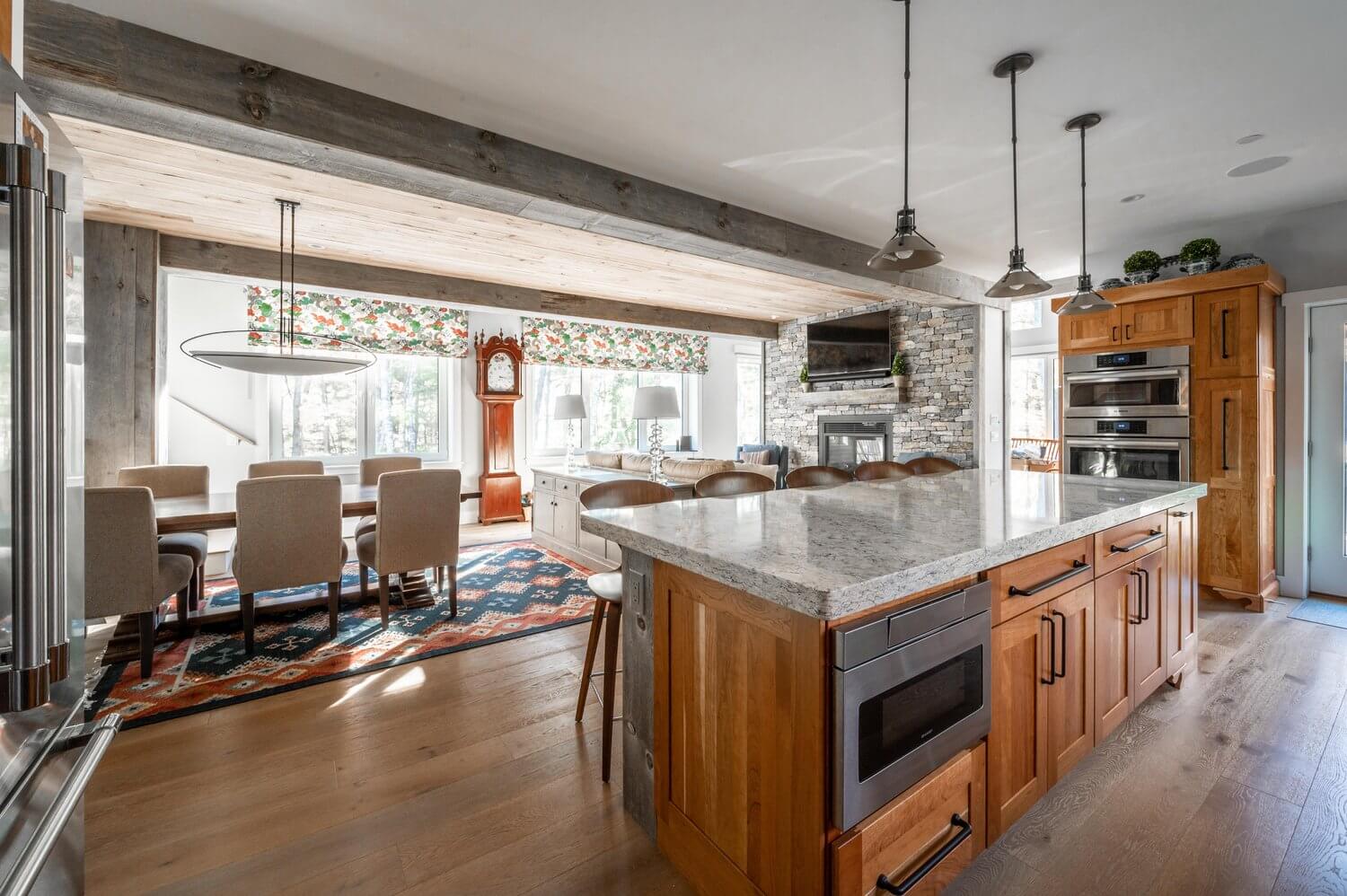1. How did you find the process of modifying the Mackworth base design?
A&J: We were actually very surprised how much flexibility we had in modifying the base design. We had spent time reviewing plans online and toured a Mackworth under construction, but it wasn't until we started working with Parlin that we realized how much flexibility we had to design our home. The only constraint was the size of the footprint we decided upon. The downside of all this flexibility was the myriad of options we could consider. This is where the process of identifying our key needs beforehand paid dividends for us.
2. Were there any pain points or features of the home that were more difficult to come together?
A&J: There were two design and engineering elements that required input from all the team members. The first was deciding where to put the door out to the back deck. Do we walk out from the sun room or from the kitchen? How would this decision impact the design of the kitchen and function of the sun room? I lost count of the hours we spent looking at the options and imagining how we would move around the house. Now that we are settled, we have no doubt that we made the right decision thanks to the help of all involved. The second obstacle was an engineering issue - how could we support the second story while keeping the first floor living space open? We did not want support posts in this space. This is where we moved into the realm of customization as the flexibility of a BrightBuilt house came into play. We finally arrived at a composite support beam that is exposed from the ceiling but we were able to match that with a false beam on the other side of the room, add some natural wood to the ceiling and framing out what look like support structures on either end of the room. It ended up tying the stairwell and fireplace into the room with the interior look of an old post and beam farmhouse - one of our key design elements.
3. In terms of site specific considerations, what was important to you from an exterior perspective?
A&J: We wanted a high efficiency home and we wanted it to look like an old Maine farmhouse. The choice of the lot and how the home would be situated helped us achieve this goal. From the street, we would look at the gable end of the house. Parlin's suggestion to have a dormered roof line and not having an attached garage helped the design. The south facing wall of windows is not visible from the street, so we are pleased with the final outcome. We also found the advances in exterior siding have improved substantially. We could achieve our desire for a low maintenance exterior without sacrificing the traditional look we wanted.
4. Were there any aspects of the finish selection process that you found easier to navigate than you were expecting?
A&J: We are not sure we would use the term "easier." We did want to customize the home to our particular tastes, so this process was fun, overwhelming and exciting all at the same time. Of all the choices, the selection of kitchen appliances and bathroom fixtures was probably the easiest, as we had guidelines on efficiency for these fixtures. We did solicit help from Helen Archer from Take Two Design to join the team and assist us with the interior design: fixtures, tile, flooring, lighting, etc. Adding her to our design team was a big help in moving this process from overwhelming to exciting and fun.
5. What was it like to work with all the teams involved (the builders, the manufacturer, BrightBuilt Home, etc.)?
A&J: First of all, we never viewed it as working with "all the teams". We all worked as one team. Everyone on the team played a significant role in the final product. The key members of the team were Parlin from BrightBuilt to design the house, Bill Clark (WP Clark & Sons) to build the house, and Helen Archer who focused on interior design. We mentioned the one engineering obstacle earlier. This is just one example where all members of the team provided input to achieve the desired outcome. We are thrilled with our home and it would have never become a reality without our great team!





